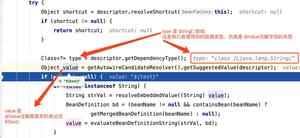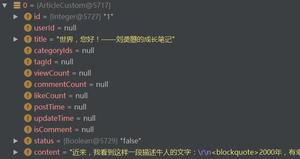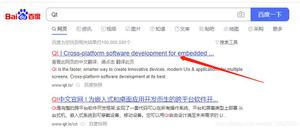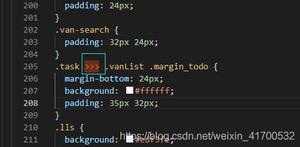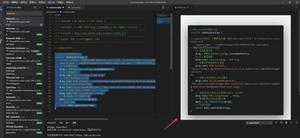解决v-html无法理解vue模版的问题-动态获取模版,动态插入app并使用当下app状态数据需求

很多情况下,我们需要使用动态的html作为某个dom元素的inner html,如果这个内容是标准的html的话,则v-html能够圆满满足需求,而如果内容包含了vue组件,则使用v-html就不能达到你希望的目标了。
我研究有两种方案来解决,一种原生使用v-if提供的compile和mount特性;第二种类则使用render函数带来的特殊能力实现这一点。
其中render函数的方案有一个现成的vue组件作为参考. v-runtime-template.
该组件产生的背景:
在项目开发中需要从server上接收template string.比如,即允许用户自己通过拖拽来设计接口风格的程序中,通常被保存为vue template code,而该code会使用由前端工程师开发好的预定义组件。这些组件将通过api调用请求数据并且填充页面的一个部分。
正如上面所说的,v-html很大程度上能够部分满足需求:
<template><div>
<div v-html="template"></div>
</div>
</template>
<script>
export default {
data: () => ({
template: `
<h2>Howdy Yo!</h2>
<a href="croco-fantasy">Go to the croco-fantasy</a>
`
}),
};
</script>
上面的template字符串可以从server ajax call中获得。问题是,如果该template string中包含了vue template code,则无能为力!
export default { data: () => ({
template: `
<app-title>Howdy Yo!</app-title>
<vue-router to="/croco-fantasy">Go to the croco-fantasy</vue-router>
`
}),
};
v-html并不能理解vue-router这个tag,因此将会丢弃很多重要功能。
这时作者就需要开发一个能够解决该类问题的"proxy"组件
v-runtime-template的实现原理是: 自动获得v-runtime-template的父组件的context并且使得vue编译并且attach.
render(h) { if (this.template) {
const parent = this.parent || this.$parent
const {
$data: parentData = {},
$props: parentProps = {},
$options: parentOptions = {}
} = parent;
const {
components: parentComponents = {},
computed: parentComputed = {},
methods: parentMethods = {}
} = parentOptions;
const {
$data = {},
$props = {},
$options: { methods = {}, computed = {}, components = {} } = {}
} = this;
const passthrough = {
$data: {},
$props: {},
$options: {},
components: {},
computed: {},
methods: {}
};
//build new objects by removing keys if already exists (e.g. created by mixins)
Object.keys(parentData).forEach(e => {
if (typeof $data[e] === "undefined")
passthrough.$data[e] = parentData[e];
});
Object.keys(parentProps).forEach(e => {
if (typeof $props[e] === "undefined")
passthrough.$props[e] = parentProps[e];
});
Object.keys(parentMethods).forEach(e => {
if (typeof methods[e] === "undefined")
passthrough.methods[e] = parentMethods[e];
});
Object.keys(parentComputed).forEach(e => {
if (typeof computed[e] === "undefined")
passthrough.computed[e] = parentComputed[e];
});
Object.keys(parentComponents).forEach(e => {
if (typeof components[e] === "undefined")
passthrough.components[e] = parentComponents[e];
});
const methodKeys = Object.keys(passthrough.methods || {});
const dataKeys = Object.keys(passthrough.$data || {});
const propKeys = Object.keys(passthrough.$props || {});
const templatePropKeys = Object.keys(this.templateProps);
const allKeys = dataKeys.concat(propKeys).concat(methodKeys).concat(templatePropKeys);
const methodsFromProps = buildFromProps(parent, methodKeys);
const finalProps = merge([
passthrough.$data,
passthrough.$props,
methodsFromProps,
this.templateProps
]);
const provide = this.$parent._provided;
const dynamic = {
template: this.template || "<div></div>",
props: allKeys,
computed: passthrough.computed,
components: passthrough.components,
provide: provide
};
return h(dynamic, { props: finalProps });
}
}
以上代码就是v-runtime-template的核心render函数.
<template><div>
<v-runtime-template :template="template"/>
</div>
</template>
<script>
import VRuntimeTemplate from "v-runtime-template";
import AppTitle from "./AppTitle";
export default {
data: () => ({
template: `
<app-title>Howdy Yo!</app-title>
<vue-router to="/croco-fantasy">Go to the croco-fantasy</vue-router>
`
}),
components: {
AppTitle
}
};
</script>
上面就是使用v-runtime-template核心用法代码。有一点需要额外指出的是,它还可以访问父组件的scope,意味着任何通过data,props,computed或者methods能够访问的都能用.这样你就可以拥有dynaimc templates的能力:可被父组件访问的活跃reactive数据.
比如:
export default { data: () => ({
animal: "Crocodile",
template: `
<app-title>Howdy {{animal}}!</app-title>
<button @click="goToCrocoland">Go to crocoland</button>
`
}),
methods: {
goToCrocoland() {
// ...
}
}
如果你需要动态地应用从server端返回的template,并能插入vue app中获得对应的scope context访问能力,那么v-runtime-template是一个非常不错的选择!~
https://alligator.io/vuejs/v-runtime-template/
以上是 解决v-html无法理解vue模版的问题-动态获取模版,动态插入app并使用当下app状态数据需求 的全部内容, 来源链接: utcz.com/z/379007.html

